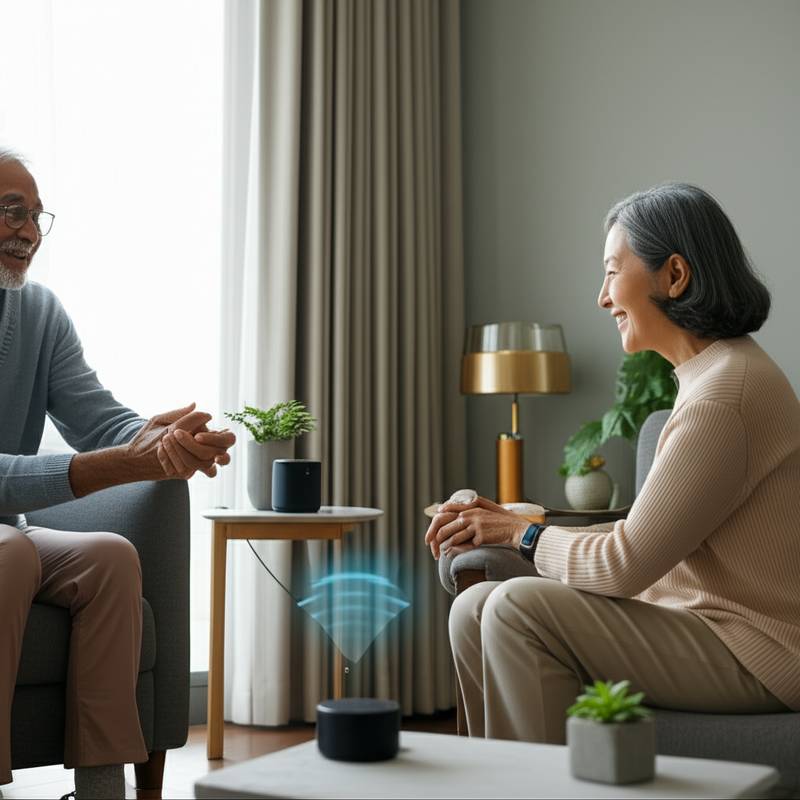Smart Home Tech for Seniors: Simplify Life This Fall
Smart homes are moving from novelty to necessity, and nowhere is their value clearer than in the lives of older adults. For seniors, the right technology does more than add convenience. It supports independence, safety, and comfort in ways that can transform daily living. As the days grow shorter and cooler this fall, smart devices offer practical solutions for making routines easier, reducing risks, and creating a more connected home environment.
This article explores how smart home technology can simplify life for seniors, highlighting the tools and systems that bring real value. From automated lighting to health tracking, each innovation is designed to support independence without overwhelming complexity.
1. Voice-Controlled Assistants
What it is: Devices that respond to voice commands to control lights, thermostats, music, or even make calls.
Why it matters: For seniors, voice eliminates the need to fumble with small buttons or complicated apps. Saying “turn on the lights” or “call my daughter” is far easier than navigating menus.
Example: Devices like Amazon Echo or Google Nest Hub allow seniors to manage their home with simple requests. They can also set medication reminders or provide news updates without requiring physical interaction.
This type of control becomes especially valuable for those with mobility challenges or vision difficulties. It also reduces reliance on multiple remotes or switches, simplifying the home environment.
3. Connected Security Systems
What it is: Doorbell cameras, smart locks, and motion sensors that keep homes secure and accessible.
Why it matters: Security brings peace of mind, especially when physical mobility makes responding to knocks or visitors more challenging. Seniors can see who is at the door without standing up or can unlock the door for caregivers remotely.
Example: Ring Video Doorbell or August Smart Lock provide visual confirmation of visitors and the ability to manage access. Family members can also receive alerts, creating a network of support.
For seniors living alone, this reduces vulnerability and offers reassurance that help is only a tap away.
5. Health and Wellness Monitoring
What it is: Devices that track health metrics such as heart rate, movement, or medication schedules.
Why it matters: Early detection and reminders can prevent small issues from becoming emergencies. Seniors can feel more confident about managing their health independently, while family members stay informed about wellbeing.
Example: Wearables like Fitbit or Apple Watch can detect irregular heart rhythms, while smart pill dispensers send alerts if a dose is missed.
Integrating health monitoring into the home environment makes it less intrusive and more natural. Instead of feeling watched, seniors feel supported.
7. Fall Detection and Emergency Alerts
What it is: Devices and systems that detect sudden falls or emergencies and notify caregivers or emergency services.
Why it matters: Falls remain one of the biggest risks for older adults. Immediate alerts can make the difference between a quick recovery and a long hospital stay.
Example: Medical alert systems like Lifeline or integrated features in Apple Watch can automatically call for help when a fall is detected.
Combining these with smart locks or connected cameras ensures that responders can access the home quickly if needed.
Overcoming Barriers to Adoption
While the benefits are clear, seniors may hesitate due to concerns about complexity or privacy. The key is to introduce technology gradually with a focus on ease of use. A single smart speaker or automated light can serve as an entry point. Demonstrations by family members can reduce intimidation and highlight the convenience.
Privacy is another concern. Choosing devices from trusted brands and adjusting settings to limit unnecessary data sharing can create a balance between functionality and security. The emphasis should always remain on enhancing independence, not creating surveillance.
Making It Happen
This fall, families and caregivers can take steps to introduce smart home technology that makes life safer and more enjoyable for seniors. Start with one or two devices that address immediate needs, such as automated lighting or voice assistants. Gradually expand to include health monitoring, smart locks, or climate control systems as comfort with the technology grows.
Smart homes are not just about gadgets. They are about creating environments that adapt to people, rather than the other way around. For seniors, this shift means less worry and more freedom to enjoy daily life.
The future of senior living is not about moving into specialized facilities. It is about reimagining the homes we already have with technology that supports aging gracefully.
